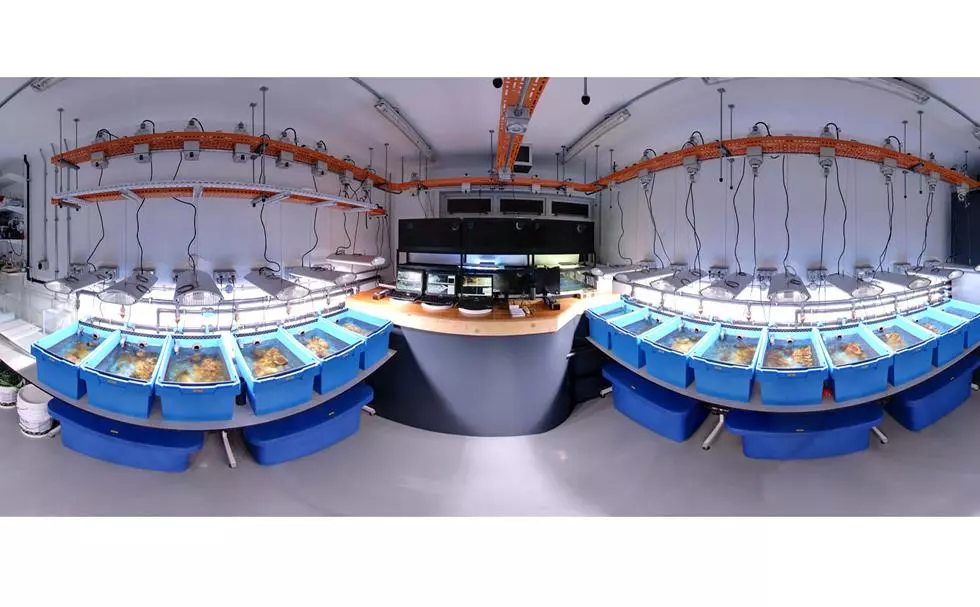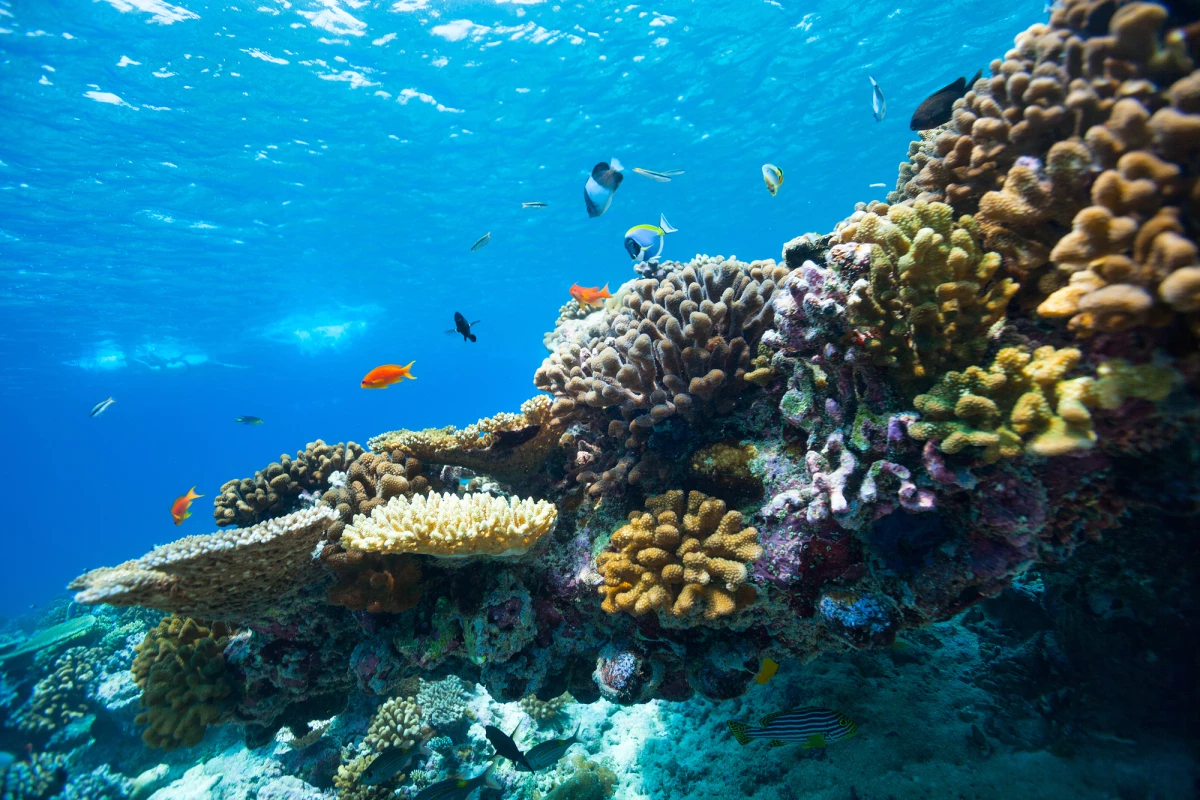One of the ways coral reacts to abnormal sea temperatures is by expelling tiny algae that lives in its tissues, a process that drives the type of bleaching events that have devastated Australia’s Great Barrier Reef in recent years. But not all corals respond by turning ghostly white, with some instead becoming shimmering arrays of bright neon colors. The authors of a new study believe this is an attempt to lure the much-needed algae back home.
A lot of the coral species that make up structures like Australia’s Great Barrier Reef survive by way of a delicate symbiotic relationship with this algae, which shelter in their cells and provides them with energy via photosynthesis. When sea temperatures rise, it causes this relationship to break down, with the algae abandoning their homes to leave the coral white, withering and in danger of dying.
In what has been a mystery to scientists, however, some of these algae-free coral respond by exhibiting a variety of bright colors instead. To study this phenomenon, scientists at the University of Southampton conducted laboratory experiments at their coral aquarium facility, through which they found these corals produce a type of protective “sunscreen” layer that presents as these colorful displays.

This is a consequence of a business as usual approach on part of the corals, the team found. In the absence of the all-important algae to absorb light, it bounces around inside the coral tissue to give it its white appearance, But when these corals are able to continue some of their normal functions, this internal light instead boosts the production of colorful photoprotective pigments, which act a lure for the returning algae.
“The resulting sunscreen layer will subsequently promote the return of the symbionts,” says Professor Jörg Wiedenmann, head of the University of Southampton’s Coral Reef Laboratory. “As the recovering algal population starts taking up the light for their photosynthesis again, the light levels inside the coral will drop and the coral cells will lower the production of the colorful pigments to their normal level.”
The scientists believe that corals exhibiting this behavior have most likely experienced mild or short-lived warming events, rather than the type of extreme and drawn-out temperature rises that threaten much of the world’s reefs.
“Bleaching is not always a death sentence for corals, the coral animal can still be alive,” says Dr Cecilia D’Angelo, Lecturer of Molecular Coral Biology at the University of Southampton. “If the stress event is mild enough, corals can re-establish the symbiosis with their algal partner. Unfortunately, recent episodes of global bleaching caused by unusually warm water have resulted in high coral mortality, leaving the world’s coral reefs struggling for survival.”
The team’s research was published in the journal Current Biology, while the video below details this process of "colorful bleaching."
Source: University of Southampton




